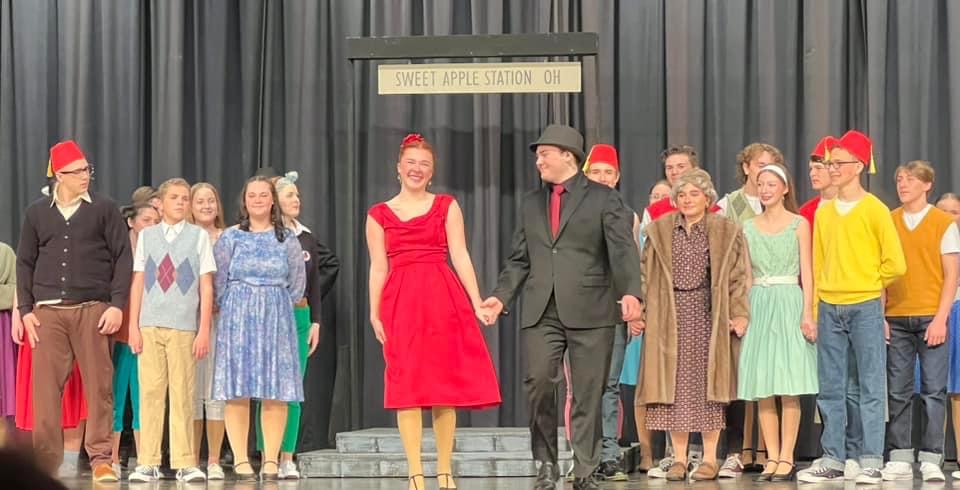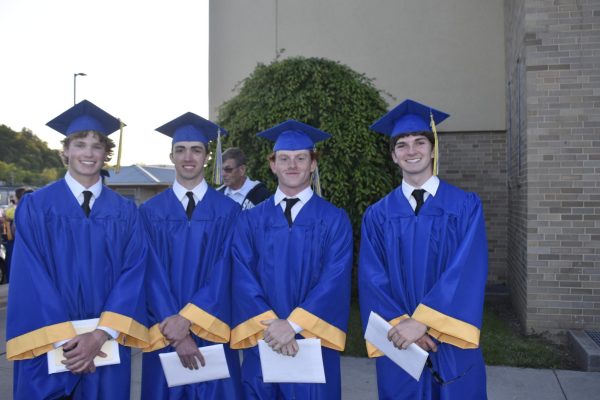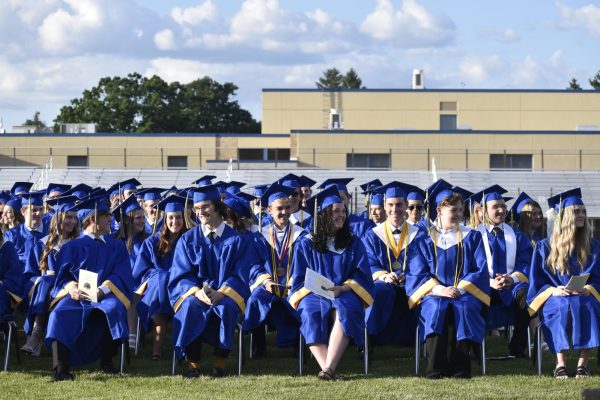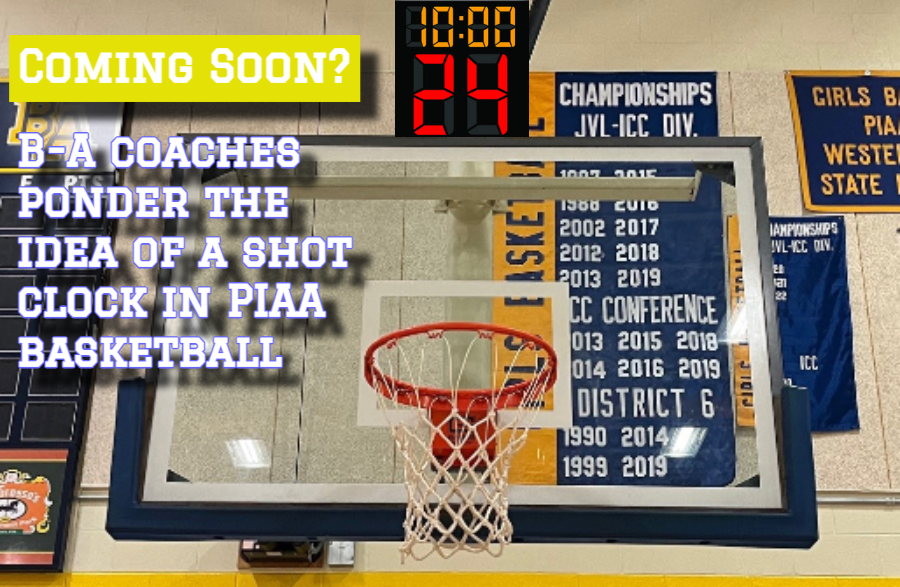In a recent PIAA 6A playoff basketball game held at Bensalem High School, Lower Marion’s dreams of a state championship fell short in a close contest with Archbishop Wood.
While trying to slow down one of PA’s top recruits in McDonald’s All-American Jalil Bethea, Lower Merion employed a controversial strategy.
In the second quarter, Merion guard Owen McCabe dribbled across the halfcourt line, and just stayed there, bouncing the ball in place. He managed to draw precious minutes off of the clock because of a lack of defensive pressure.
While Lower Merion lost 66-64, moving Archbishop to the next round, the slow-down strategy kept the Aces close and early pull off the upset.
Some might say the stalling happened because of a lack of defense, but the others go to question on the situation if there was a shot clock in play.
Scenarios like this play out on a weekly basis in Pennsylvania, and its one reason why state legislature has been considering adopting a shot clock in high school basketball.
There are many reasons to adopt a shot clock, from increasing the pace of play to aligning the high school game more closely with the pros. However, traditional approaches and the cost of new equipment remain difficult hurdles to jump.
EVOLUTION
Like all sports, basketball has evolved in many ways in the 130 years since it was created by Dr. James Naismith. One of the most revolutionary advances was the three-point shot.
In 1961, the three-point line made its first use in the NBA. At the start, the creation of the 3pt line was largely seen as something to only be used in late situations. One ABA coach in the 70’s said at first he never used the 3-pointer unless his team was losing late in the game and was desperate for points.
Like a shot clock, the three-point line was a drastic change to the way basketball was played. Many basketball legends that played back in the day were either very inefficient from deep, or just avoided it at all costs. However, there were many players who thrived from the creation of the line. Players like Larry Bird, Mark Price, and Dale Ellis embraced the line, averaging a percentage of around 40 throughout their career, and it changed the way the game was played.
A shot clock in high school would stretch the basketball IQ of the kids on the court.
— Kyley Longo-McGarvey
The introduction of a shot clock would require a period of adaptation as in the case of the three-point line, which the PIAA first installed in 1987; ultimately, B-A coaches think players would adapt and, according to Coach Longo-McGarvey, flourish.
“A shot clock would certainly change the game,” said Longo-McGarvey. “You wouldn’t be able to see teams run stalls, it would force your offensive sets to be more fluid, and require the athletes to run the sets quickly and effectively. You see often in college where teams will run a set and if they don’t score they go into their quick hitter as the shot clock winds down. A shot clock in high school would stretch the basketball IQ of the kids on the court.”
The skill that would follow an addition of the shot clock would out-weigh the fear of time. Really, the fear of time would be the factor that would lead to the production itself. When forced under pressure, players would have to adapt and overcome that pressure. While some might fall to the newly applied pressure to the game, others will thrive in their ability to change up their play style. A new challenge at a younger level will only increase the baseline skill needed to play the sport, and as we know better play is a positive advancement.
SHOT CLOCKS IN PRESENT DAY
A shot clock was first adopted in the NBA in 1954 because of the game being too slow. Whether that was for fans or players themselves, as long as offenses maintained possession of the basketball, most games remained somewhat low in score. The duration of the shot clock since its creation has not been changed at the pro-level, so it still remains to be 24 seconds.
According to the Athletic, “The impact of the new shot clock and other rules was immediate. Scoring rose from 79.5 points per game in 1953-54 to 93.1 per game in ‘54-55.” While 14 points may only seem like a few shots, the change was impactful in speeding up offenses that lived off of maintaining possession for the majority of the game.
The NCAA adopted a 45-second shot clock for men following the 1985 season, and it has been whittled down to 30 seconds in the 40 years since. Along with the three-point line, which came in 1987, the advancement made the college game much faster and more exciting.
Currently, there is approval from the National Federation of State High School Associations (NFHS) for a shot clock of 35 seconds. However, the states themselves have to adopt the ruling. While states have the option to implement the clock, the NFHS has posted rules that must be followed in order to allow usage of the clock.
There are only 12 states that have implemented the use of shot clocks so far, and Pennsylvania isn’t one of them. However, in 2022, there was debate within the PIAA over allowing the use of shot clocks in high school basketball, and overwhelming support for the clocks themselves just isn’t there. A recent published article by Pittsburgh Tribune Review writer Chris Harlan stated, “The PIAA survey was evenly divided with 50.8% of responding schools opposed to a shot clock and 49.2% in favor.”
Although cost is an issue, I think it is more than just that. Running a shot clock can be a very complicated job. You have to know when the ball touched the rim, was there a change of possession, things like that.
— District 6 official Chris Rickens
Chris Rickens, who is the Officials Representative from District 6, said while the District has never conducted a formal survey, he feels most coaches favor the clock.
The problem comes, Rickens said, not so much with support or funding as with training.
“Although cost is an issue, I think it is more than just that,” Rickens said. “Running a shot clock can be a very complicated job. You have to know when the ball touched the rim, was there a change of possession, things like that.
Anyone hoping to run a shot clock would have to trained and possibly be subject to scrutiny if things go wrong. Considering PA already has a serious shortage of officials for high school games, people willing to handle shot clock duty in basketball could be hard to come by.
“You need to have someone who is dedicated and willing to learn the rules specifically regarding the shot clock,” Rickens said.
B-A COACHES FAVOR A SHOT CLOCK
Many schools recognize that finances could be a problem when implementing a shot clock, but Longo-McGarvey, who played using a shot clock in college, said she would personally love to see its adoption in high school
“There’s a lot of moving parts. You have to pay someone to run the shot clock, you have to pay for the equipment to install shot clocks, and I am not sure that all schools have that kind of room in their budgets,” said Longo-McGarvey.
According to the Trib, in an article about usage of the clocks in Pennsylvania, it could cost as much as $10,000 to add shot clocks to each school.
However, many coaches believe the benefits would out weigh the costs. One benefit would be to revolutionize the game in a similar way to 1987, when the high schools first adopted the three-point line.
Among those coaches seeking an offensive revolution is B-A’s varsity boys coach Tyler Mertiff.
“I really hope it happens,” said Mertiff, “I think it will make for a more exciting game. I believe it will help teams in this area more by speeding the offense up and creating more opportunities for scoring. I unfortunately don’t think it will happen in Pennsylvania for some time.”
Mertiff’s reasoning involves the referees. As noted in a BluePrint article from 2022, PA is already suffering from a severe shortage of referees, and new, younger officials are hard to come by.
“I believe the shortage of younger referees in the PIAA hurt the chance of the shot clock being put in,” said Mertiff. “We have a lot of older, more veteran referees who will have a hard time keeping up with the faster pace of play.”
Many coaches view the offensive evolution of individual players as another reasons for going to a shot clock.
High school teacher Mr. Kerry Naylor, who has coached junior high basketball for 25 years, was one coach who said a shot clock is appropriate in an era when kids are stronger offensively than any other time in the game’s history.
“Kids today have a better idea of how to score than ever before and there are lots of players who are working year round to perfect their game,” he said. “The lack of a shot clock in some ways makes a mockery of that effort. I’m not talking about teams that run offense and move the ball on each possession. I’m talking about teams that would prefer to hold the ball and do nothing for minutes at a time to get an opponent to come out of a particular defense, like a zone. To me that is not the spirit of the game and it’s doing nothing for the players. A shot clock would allow teams to run offense and look for a perfect shot while not completely taking the ball out of the hands of players who have spent their off seasons working on their offensive game.”
He too sees that a shot clock would be beneficial to the game. The learning that would come from the younger generations of the clock will supply the game of basketball with talent for years to come.
I believe the shortage of younger referees in the PIAA hurt the chance of the shot clock being put in. We have a lot of older, more veteran referees who will have a hard time keeping up with the faster pace of play.
— Tyler Mertiff
“There’s an almost romantic notion of the movie Hoosiers and a team holding the ball for five passes every trip down the court, waiting for the perfect pass, and that’s all fine and good,” Mr. Naylor said. “Every coach loves to see their offense run fluidly to achieve the best possible shot, but you also have to account for and respect the players who have the talent to score. Sometimes games can becomes a battle of my genius game plan against your stubbornness. That’s not what it’s supposed to be about.”
B-A junior high boys coach Shawn Hallahan, who coached with a shot clock when he was coaching at Division II Connecticut and Springfield Colleges, said introducing the time limitation in PA would not only be a benefit for offenses but in an ironic twist do much for defenses, as well.
“It changes the flow and pace of the game. On offense you must account for shot clock situations and plays,” Mr. Hallahan said. “Contrary to that, on defense you don’t have to defend as long, but can still get rewarded for playing great defense by creating a shot clock violation.”
From personal experience, Mr. Hallahan recognizes both sides of benefits by adding a shot clock. Overall, he said he supports the addition of shot clocks at the high school level, noting that he saw it work when he was recruiting the New England states.
Final Thoughts
While the addition of a shot clock might take be hit to the budget of the school, it would change the way that basketball would be played at Bellwood-Antis and across the commonwealth. Coaches at B-A also believe that a shot clock would benefit the players, and make the game more exciting for all. As collegiate and professional leagues have already found out, the implementation of a shot clock would force players to improve, and to be more successful when playing their game. An addition of a shot clock could not only improve offensive play, but go hand in hand with forcing improved defense.
Visible play clocks have already become an integral part of high school football in PA, so shot clocks in basketball may be the next logical step. It would all be a part of the evolutionary process that continues to propel scholastic sports in the commonwealth into the future.
The issue may come up before the PIAA again before the 2024-25 season.












